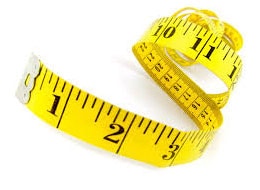[A version of this article was originally published in the NOMMA Fabricator]

Is it pipe or is it tube? Understanding the differences can make sure you get the material you want in the size you need.
Do you remember being surprised when you learned that a “2 by 4″ doesn’t actually measure 2 inches by 4 inches? Have you ever been told that 1-1/8” pipe doesn’t exist? Using the correct terminology when ordering material (or fittings, tools, or other items that must be used with these materials) can save a lot of time, headaches and money!
Many products have a name that for convenience only approximates the material’s size. These are sometimes referred to as nominal dimensions. Webster’s describes nominal as “in name only.” In other words, you can’t trust the “name” dimensions in actual measurements or calculations. Differences and difficulties in correctly describing a tube and pipe are common in the metalworking industry.
Pipe is a commonly used material in the fencing industry, most commonly for chain link fences and gates. However pipe and tubing are not the same materials! Pipe was originally used for the movement of water, and therefore the ID (inside diameter) was the critical dimension. The nominal dimension for pipe is the ID. So, 1½ inch pipe is NOT 1½ inch outside diameter, but instead is nominally, (approximately) 1½ inch inside diameter. Pipe is typically manufactured to looser tolerances and less expensive to purchase. However in the fence and construction industry, where pipe is commonly used, it will often be referred to by its outside dimension, since fittings, caps and other parts most commonly mate the the outside of the pipe.
The wall thickness of pipe is designated by various “schedules,” most commonly schedule 5, 10, and 40. The exact wall thickness of anyone schedule changes with the pipe size. A 1 inch Sched. 40 pipe has a .133 inch wall, but a 2 inch Sched. 40 pipe has a wall thickness of .154 inches.
Tubing, on the other hand, is typically produced to tighter tolerances and designed for consistent mechanical and structural properties. Because it is typically more costly to produce it is seldom used for chain link fencing, scaffolding, etc. To further complicate matters, some companies market pipe to the fence industry as “fence tubing.” The thickness of a tube’s wall is normally described as a gauge. While a specific pipe schedule will mean different wall thicknesses depending on the pipe size, a specific gauge is consistent regardless of tube OD (outside diameter).
Let’s look at a typical example…
A purchasing agent is told to buy a “2 inch pipe notcher,” there are actually many different sizes that could possibly fit this description, as shown below.
| Name | Outer Dim. | Wall Thickness |
|---|---|---|
| 1 ½” x schedule 5 pipe | 1.90″ | .065″ |
| 1 ½” x schedule 40 pipe | 1.90″ | .145″ |
| 2” x schedule 10 pipe | 2.375″ | .065″ |
| 2” x schedule 40 pipe | 2.375″ | .154″ |
| 1-7/8″ OD x 18 gauge tube | 1.88″ | .049″ |
| 2” OD x 16 gauge tube | 2.00″ | .065″ |
This is only a partial list! You can see that all of the materials listed are about 2 inches, but depending on the tolerance and precision of the tool or mating part, describing all of them as 2-inch pipe is bound to cause problems.
So, given all the possible tube and pipe sizes and all the various names used to describe them, how is the average person supposed to keep it all straight? Whether you think your material is tube or pipe, when describing it, remember these key points:
- Is a dimension OD (outside diameter) or ID (inside diameter)?
- Is the dimension precise, (taken with a micrometer or calipers)?
- Is the dimension approximate, (taken with a tape measure, eyeballed, etc.)?
- What is the wall thickness/schedule/gauge?
If the purchasing agent had been told to order a pipe notcher for “a pipe just about 2 inch outside by about 1/16-inch wall,” then he would have narrowed down the possibilities. Most likely, he is using 1-½ inch by Sched. 5 pipe.
You probably work with the same few sizes over and over. Look and see what your material supplier calls your material. You may wish to obtain and make a permanent file of “material spec sheets” for each size of pipe or tube you commonly use. This document should show precise dimensions, tolerance range, manufacturing method, coatings, or treatments, etc. These documents can be valuable and even serve as a sales tool. Your customers who scrutinize every detail may want to see why the same chain link fence job can cost so much more, based on the quality of the material ordered.
You probably have reference charts in your office for fractions to decimals, inches to millimeters, etc. If tube and pipe are a routine material for your business, post a chart showing pipe sizes by OD, various schedules, and gauges for tubing. Make sure the employees who do purchasing understand these distinctions and are comfortable in correctly describing the various materials.
The link below is a handy printable chart of common pipe sizes and schedules.





3 Comments
Charles
Hey lad, I am quite enjoying posts on your blog. They are structured well, easy to digest and understand, despite English being my third language. All the best.
Gauges Manufacturer
Really admirable. you explain gauges very correctly. It is really helpful and informative for me. Thank you for sharing. Keep sharing
DIC Tools India
https://dictoolsindia.com/gauges/index.php
Skipper Pipes
It’s difficult to understand the shape & size of the Piping system for any requirement & the differences can make sure you get the material you want in the size you need. These comprehensive comparative tips are really helpful for our industries. I would appreciate the effort that you have mentioned in the blog. Keep posting.
Skipper Pipes
https://skipperpipes.in/